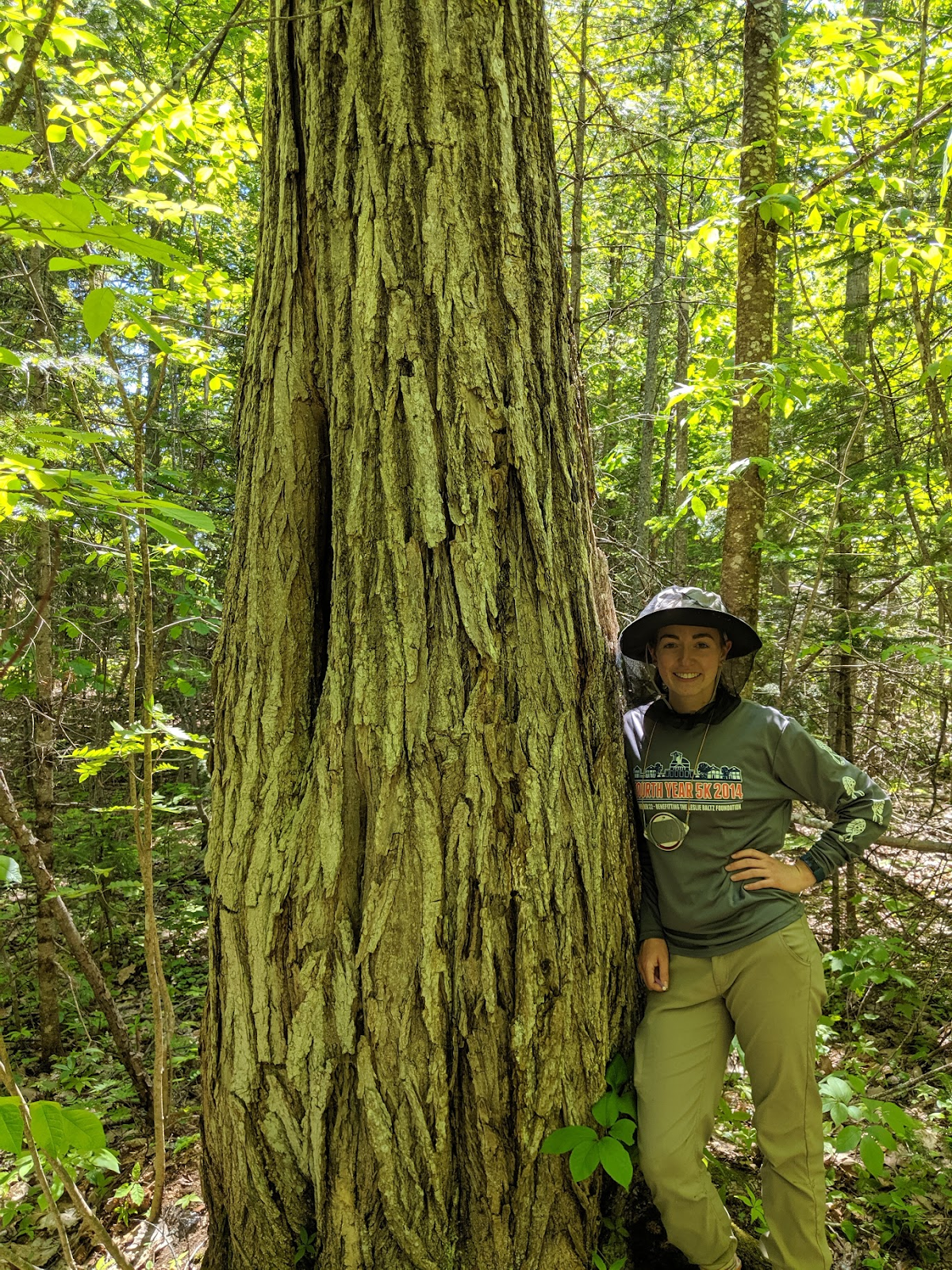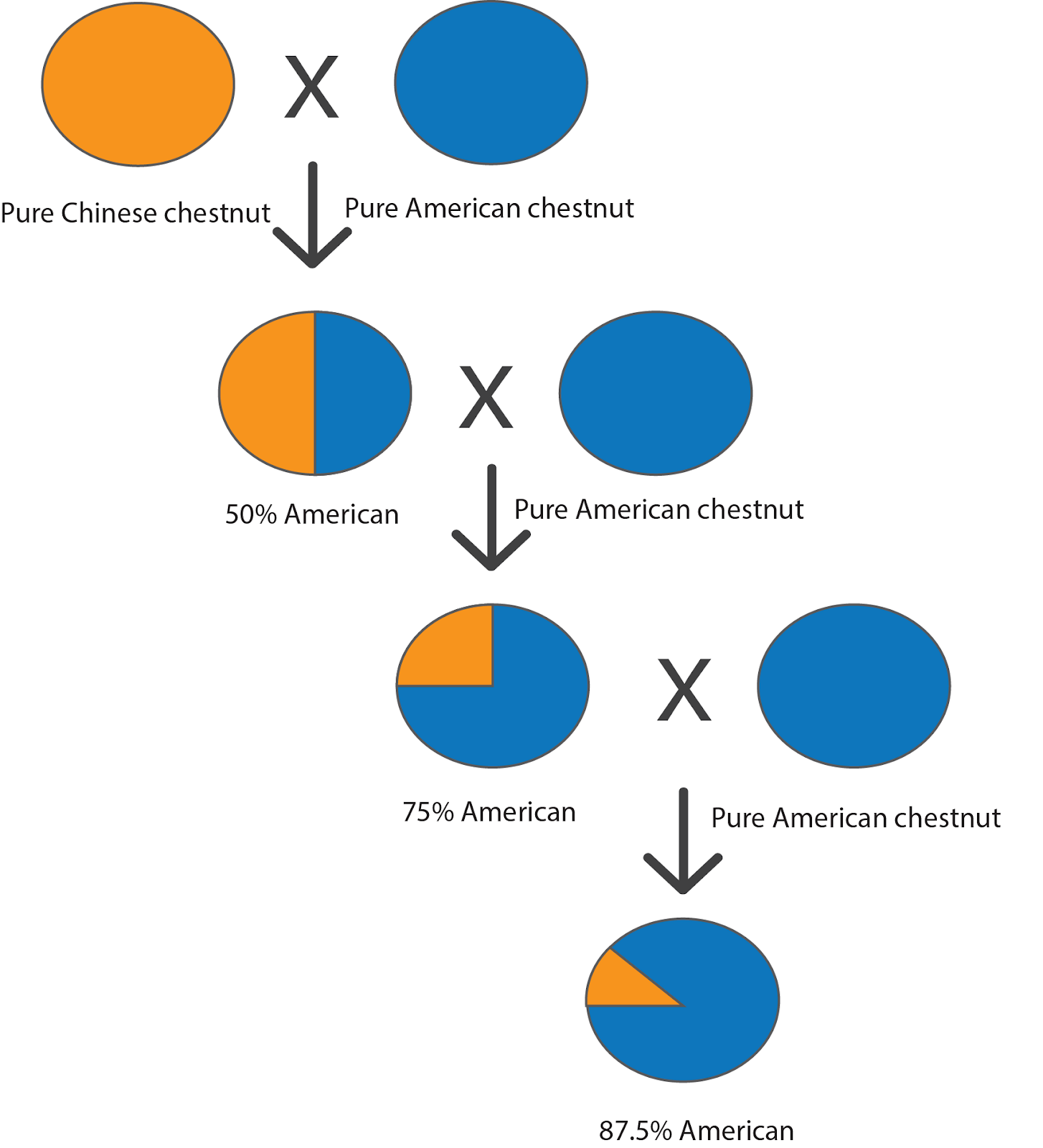By Lane Scher
The American chestnut tree used to be the most common tree throughout the entire eastern United States, from Alabama to Massachusetts. The trunk could grow to be 10 feet across with branches that stretched 100 feet tall. The trees were fast-growing and the wood was strong. It had so many uses in building that it was often referred to as the cradle-to-the-grave tree. It produced large crops of chestnuts every year, which were an important food source for wildlife, and were also an important part of Appalachian culture — remember the line in the Christmas song, “chestnuts roasting on an open fire”? If the tree was so common, why don’t we see it in our forests? Why don’t we eat chestnuts in the winter? It’s all because of a fungus that was brought to the Northeast in 1904 and spread rapidly across the eastern United States, killing 4 billion chestnut trees in its path.

Last summer I visited a forest in Maine where a few American chestnut trees haven’t yet been killed by the blight. The trunk of this chestnut tree is about three feet in diameter, which is about a third of the size they used to be!
The fungus, Cryphonectria parasitica, was brought to New York City from Asia on imported Chinese chestnut trees. Chinese chestnut trees, close cousins of the American chestnut, evolved with the fungus and developed resistance to its infection. But American chestnuts are not resistant, and suffer from “chestnut blight” when infected by the fungus. The fungus enters the bark and strangles the tree from the ground up, so everything above the ground dies. The roots, however, survive, and a new trunk will eventually sprout from the root system. But in a few years, this trunk will also be strangled before it can produce seeds. The tree can resprout a few times, but eventually even the roots will die. Many chestnut trees still live in our forests, but as shrubby resprouts that can’t reproduce, instead of the majestic canopy tree they used to be.

This diagram shows how hybridization and backcrossing work. Each offspring is half of each of its parents. An individual whose parents are 50% American chestnut and pure American chestnut will be 75% American chestnut.
Now, many scientists are trying to revive this important tree. Most recovery strategies depend on the resistance of its cousin, the Chinese chestnut, and transferring that resistance to the American chestnut. Because the two species are so closely related, they can produce offspring together, called hybridizing. The “hybrid” offspring are genetically half American chestnut and half Chinese chestnut. The hybrid can then reproduce with another pure American chestnut (this is called “backcrossing”) to produce offspring that are genetically 75% American and 25% Chinese. Some of these trees will have the resistance gene from the Chinese chestnut in that 25%. After a few more generations of mating only the resistant offspring with pure American chestnut trees, scientists have been able to breed a tree that is almost entirely American chestnut, but has the gene for blight resistance.
It will take time to make sure this new blight-resistant American chestnut is safe to reintroduce into our forests. Once they’re planted back in our forests, it’ll take time for them to grow to the size they used to be. Maybe soon, if not in our lifetimes then in our children’s lifetimes, we’ll see the great American chestnut back in our forests. Hopefully one day we’ll once again eat roasted chestnuts in the winter, and we’ll have this wonderful tree, as well as the huge team of researchers who brought it back, to thank.
Edited by Jenna Beam
